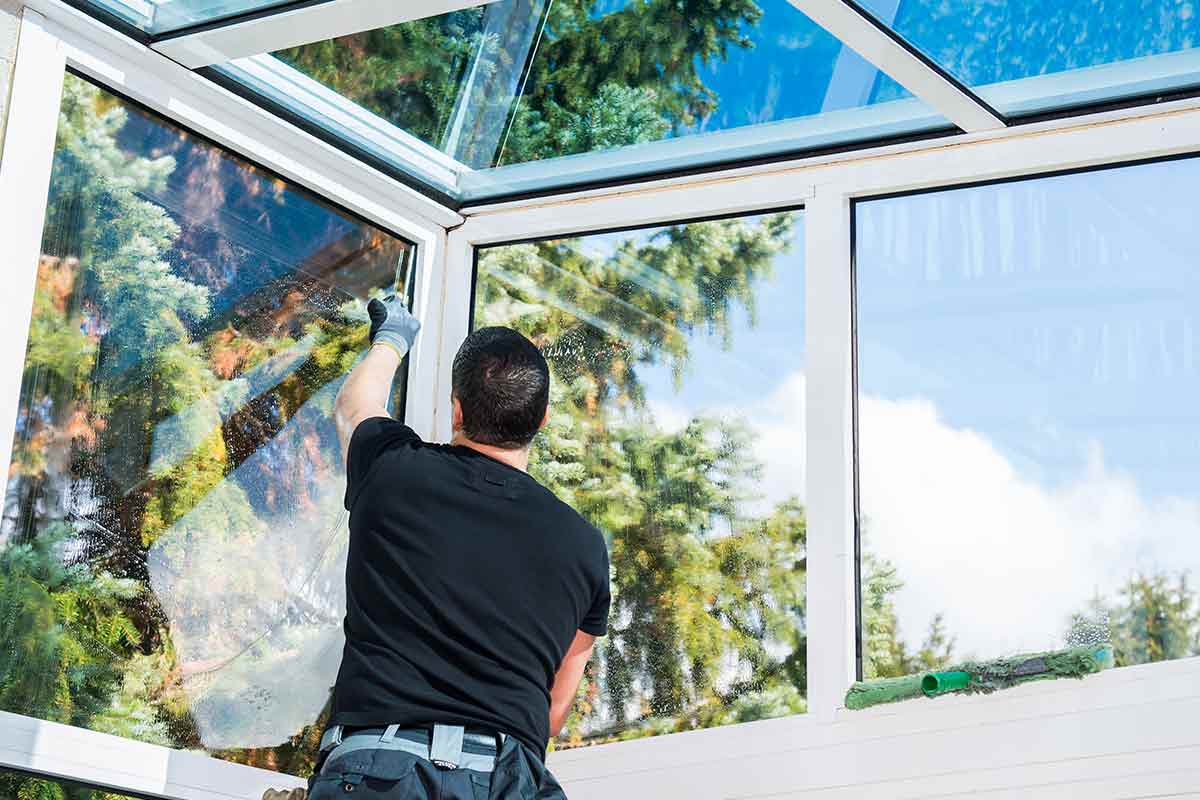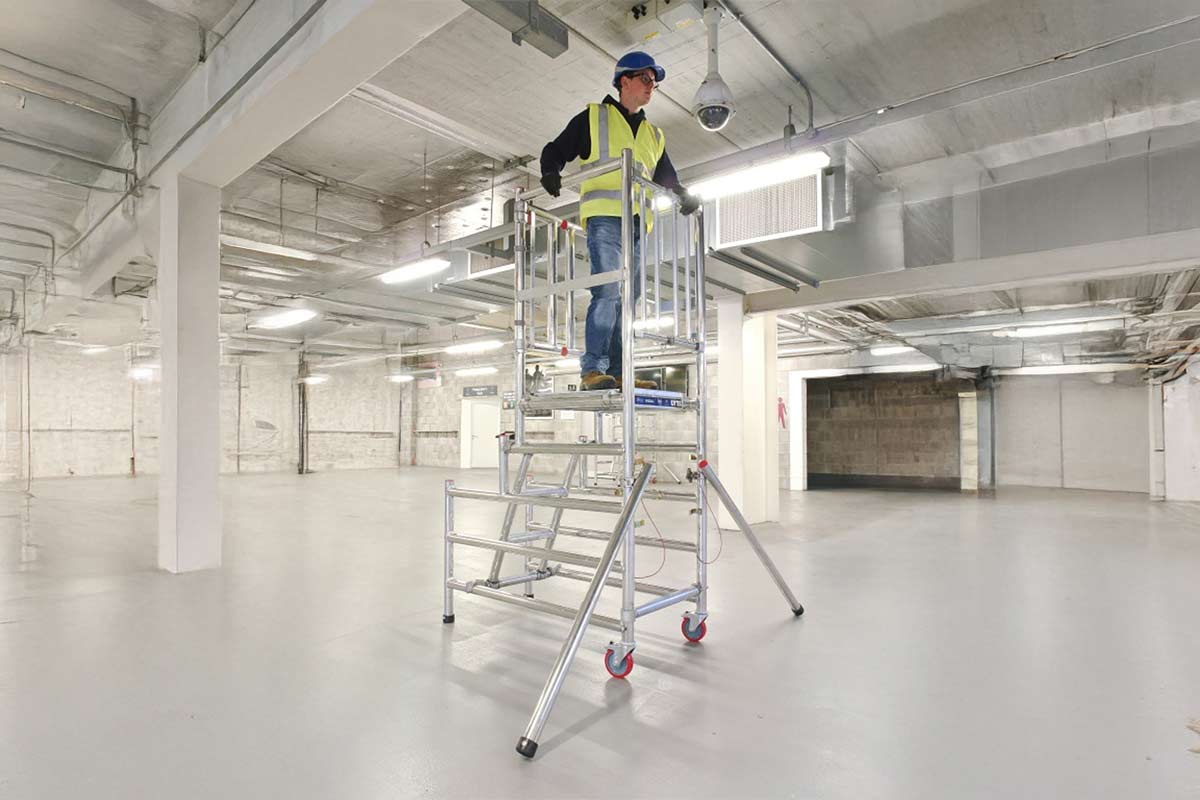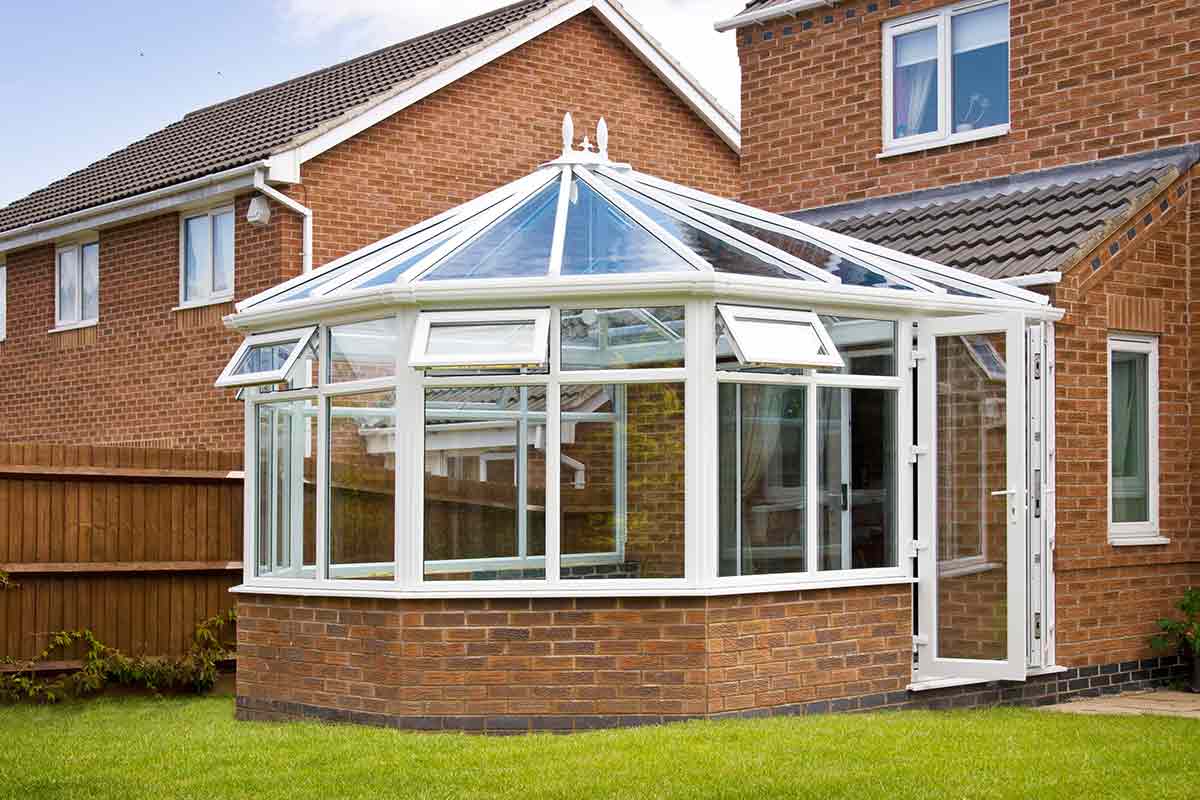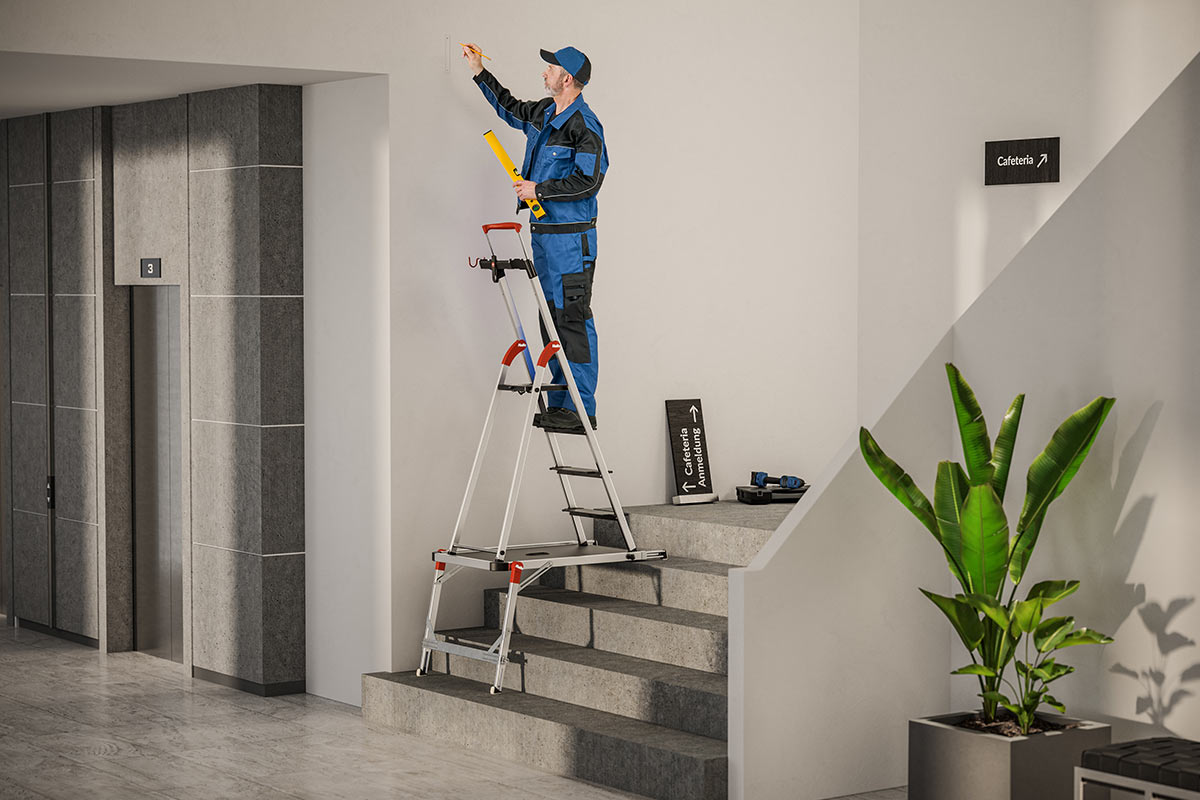How to Make a Ladder Safer: Our 7 Tips & Product Recommendations
June 10, 2025 | Nate Cord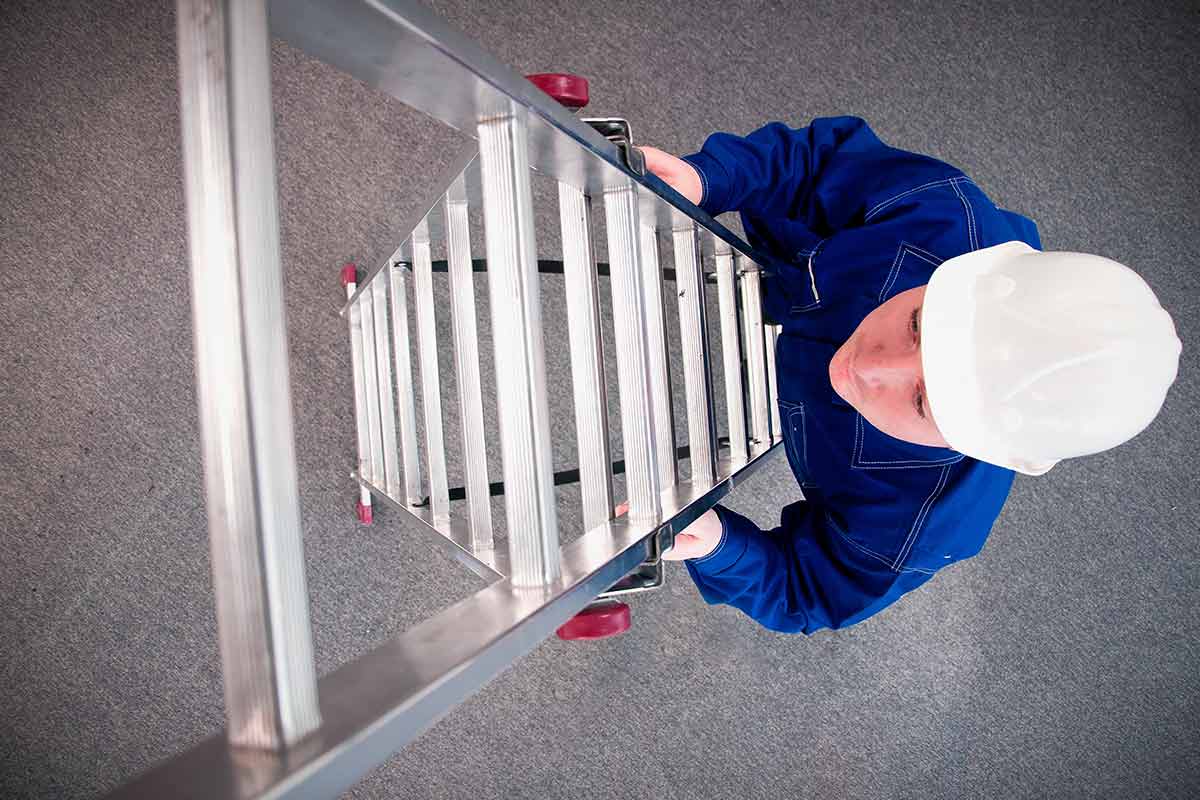
There’s no tip toeing around the fact that using a ladder comes with its risks, and falls from ladders are actually more common than you might think. But the good news is that a few simple tips and safety accessories can make a world of difference.
From choosing the right ladder and maintaining 3 points of contact to smart safety products such as a safety base and anti-slip rung covers, there are plenty of practical ways to reduce your risk and feel more confident working at height.
In this blog, we’ll walk you through seven tips from our experts, along with some trusted product recommendations, to help make your ladder setup as safe and secure as possible, whatever the job at hand.
1. Use Safety Feet
If you’ve ever felt your ladder wobble or shift slightly while you’re up it, you’ll know just how unnerving that can be. This is why one of the simplest yet most effective ways to make your ladder safer is to give the feet an upgrade.
Standard rubber or plastic feet can wear down over time and don’t always offer enough grip, especially on smooth surfaces like tiles, polished concrete, or even some outdoor paving.
Ladder safety feet are little add-ons that are especially designed to improve traction and stability at the base of your ladder. They typically feature anti-slip rubber soles or textured grip pads that help prevent the ladder from slipping out while you’re climbing or working.
You can find a range of quality ladder feet at Ladders4sale, including the Trim 2 Fit Box Section Ladder Feet and the Solid Non-Slip Rubber Ladder Feet.
Hailo also offer Hailo 9948-001 EasyClix Garden Feet (Reliable stability on garden beds, No sinking) and Hailo 9947-001 EasyClix Living Feet (No more scratches or streaks on the parquet, marble, etc. Non-slip stability Soft profile) These are suitbale for most of the Hailo product range.
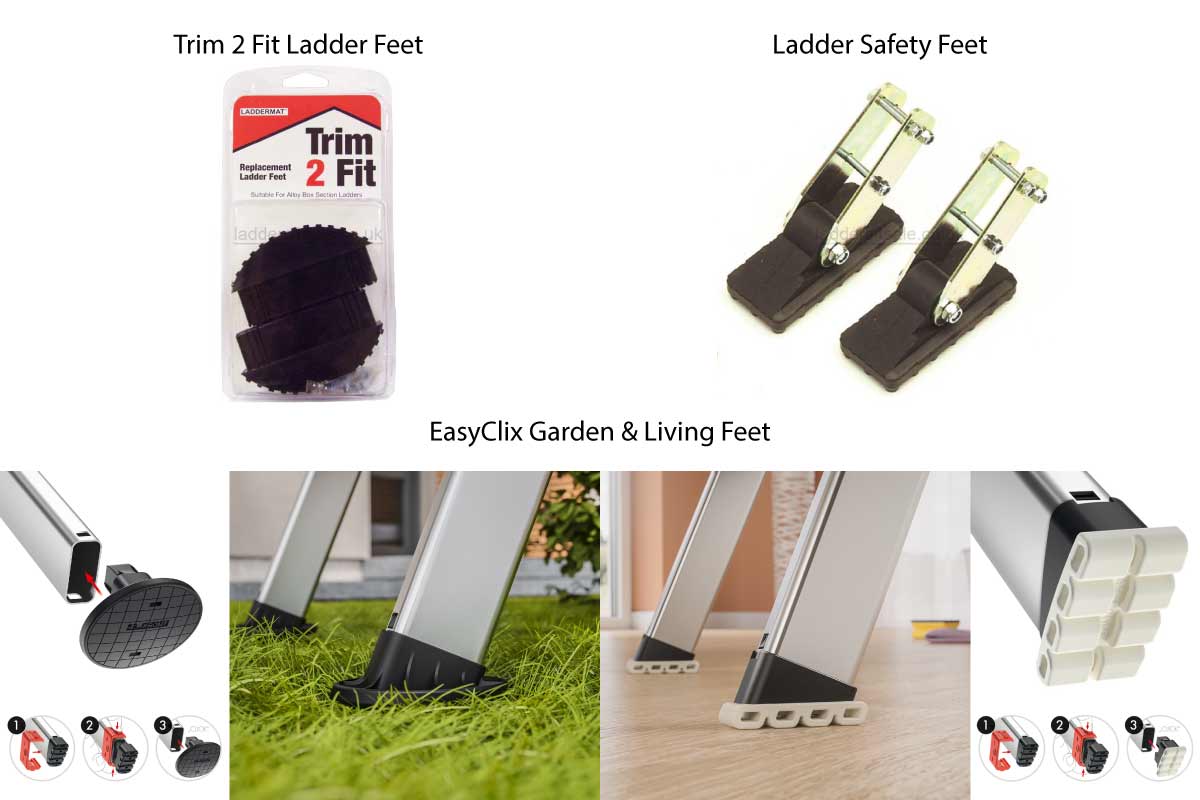
Some ladders like the Hailo TP1 Stairs platform & HAILO L80 ComfortLine 3 Tread Ladder come complete with Slip-resistant safety feet.
2. Choose the Right Ladder for the Job
This one might sound obvious, but choosing the right ladder for the task at hand is one of the most important steps in staying safe. Too often, accidents happen because someone tries to make do with a ladder that’s either too short, too tall, or just not designed for the environment they’re working in.
For example, you need to make sure the ladder you’re using is tall enough so you’re not having to balance on the top rung or overstretch to reach something.
It’s also important to think about the type of ladder you’re using, because while a step ladder is ideal for indoor jobs or when you need to work in the middle of a room without anything to lean against, an extension ladder is better suited for reaching up high, like cleaning gutters or getting onto a roof.
For more assistance when it comes to choosing the right ladder, check out our comprehensive ladder buying guide, or give our experts a call on 01639 849847 for direct advice.
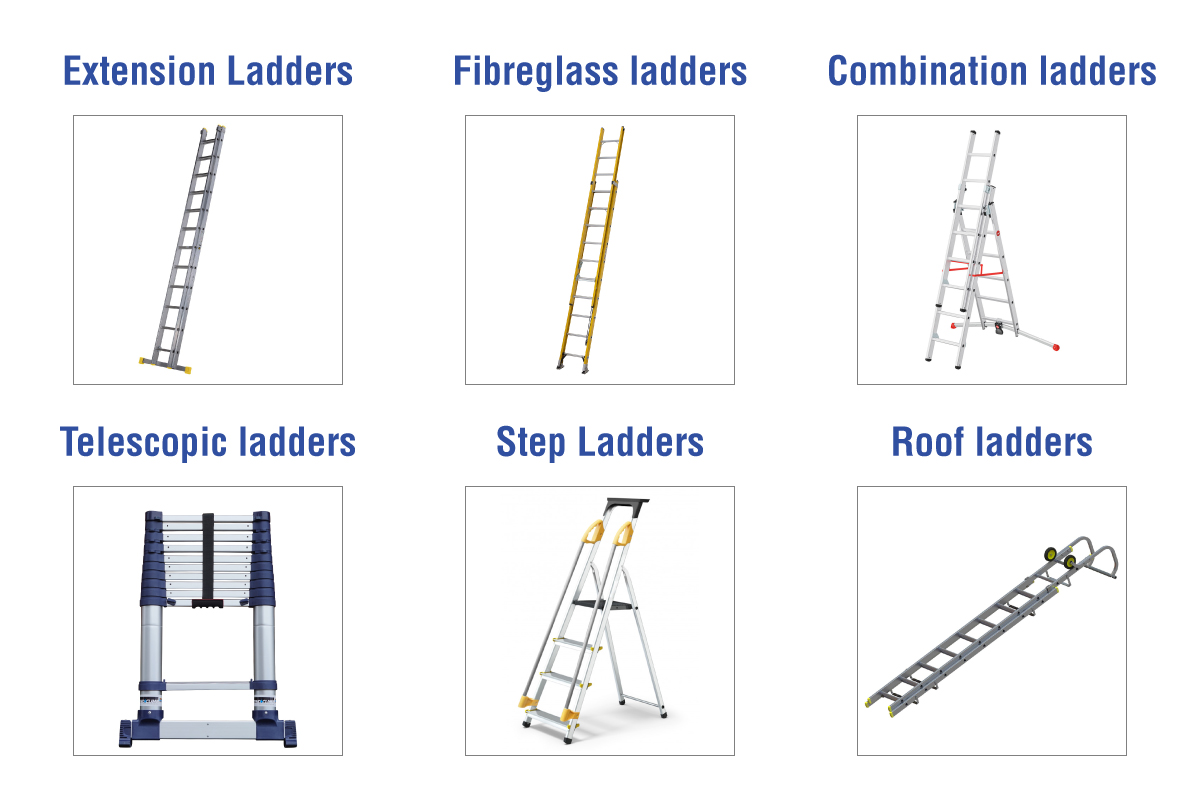
3. Use a Safety Base
When it comes to ladder stability, as we touched on in point number 1, the base is everything. No matter how careful you are further up, if the bottom slips, the whole ladder’s going down with you.
This is why many people opt for a safety base, which grips the ground securely, providing a solid, non-slip foundation that holds the feet of the ladder firmly in place, even on uneven surfaces like grass, gravel, tarmac or block paving.
It also spreads the load more evenly, which is great for preventing your ladder legs from sinking into softer ground.
The Safety Base by Ladder Fix is a great lightweight and portable option, made from rot proof and tough woven polyester impregnated with PVC.
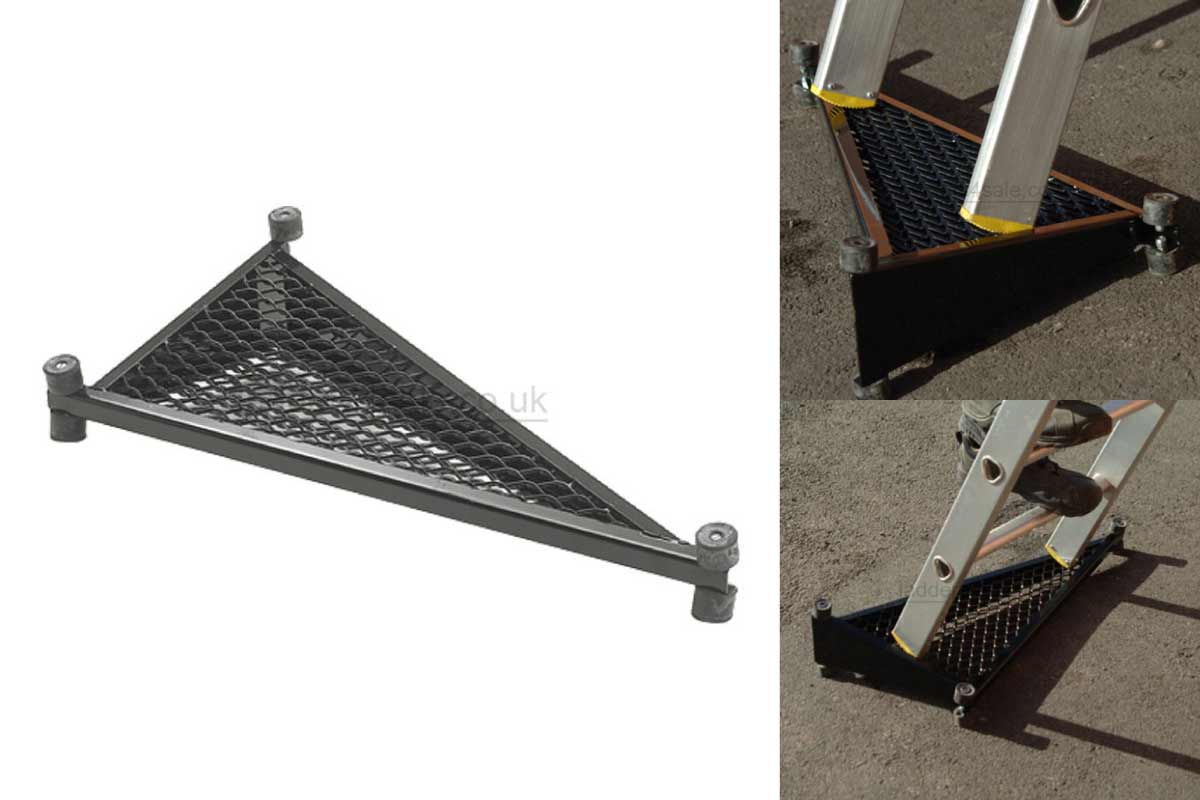
A leviliser is a similar product, which provides a virtually instant firm level surface for sloping or uneven ground.
4. Always Maintain Three Points of Contact
Whenever you hear about ladder safety, the three point of contact rule will always pop up.
This is one of the golden rules of ladder safety, and for good reason! Always keeping three points of contact means you should have either two hands and one foot, or two feet and one hand on the ladder at all times. It’s a simple habit that greatly reduces your risk of slipping, losing your balance, or falling.
If one point slips or shifts, the other two help you stay in place. It’s especially important when climbing up or down, as that’s when most accidents tend to happen.
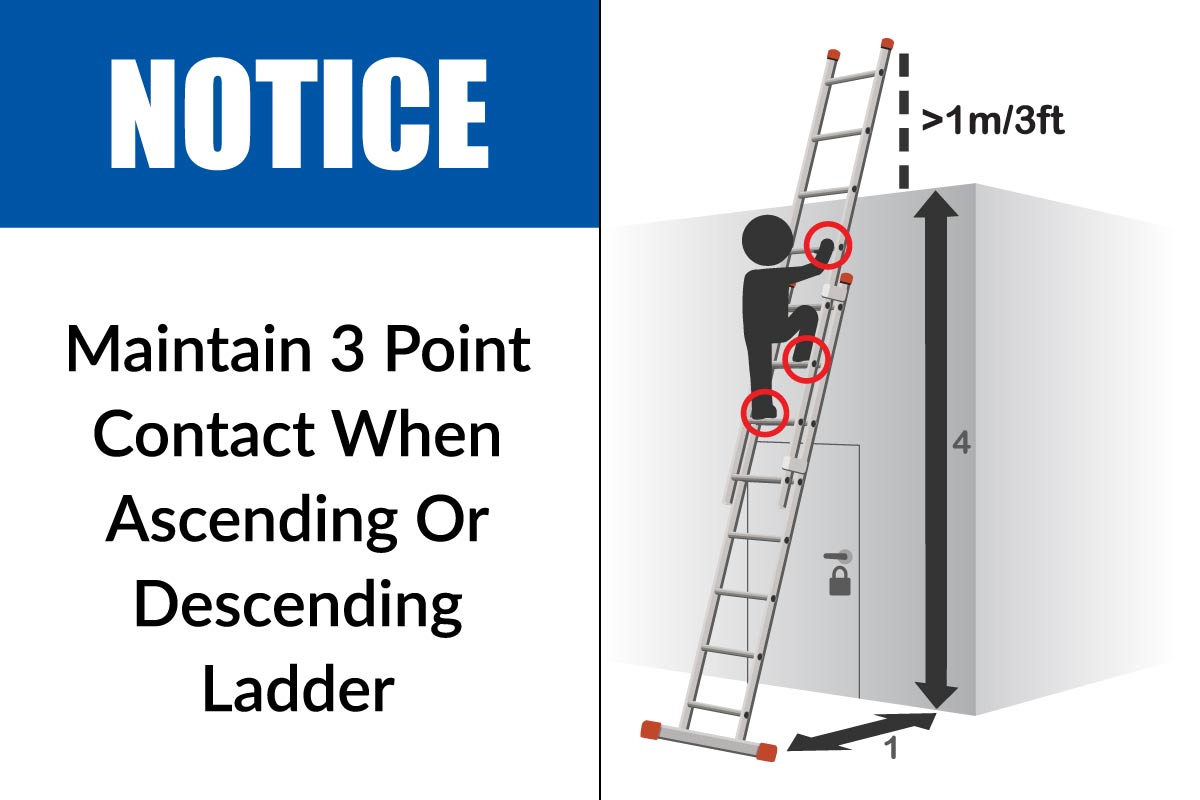
5. Use a Roof Ladder Hook (If Using on a Roof)
This tip will only apply to some, but if you’re planning to use a ladder on a roof, a roof ladder hook is an absolute must.
It’s basically a metal attachment that fits over the ridge of the roof and secures the ladder in place, stopping it from slipping down.
Once you’ve hooked the ladder over the ridge, it stays firmly anchored, giving you a much safer and more stable platform to work from. Without one, the risk of the ladder sliding or shifting increases quite a bit, which can be incredibly dangerous.
The Universal Ladder Roof Hook by Burton Tube & Wire is a good example, which converts any ladder into a roof ladder, constructed from strong aluminium yet still lightweight.
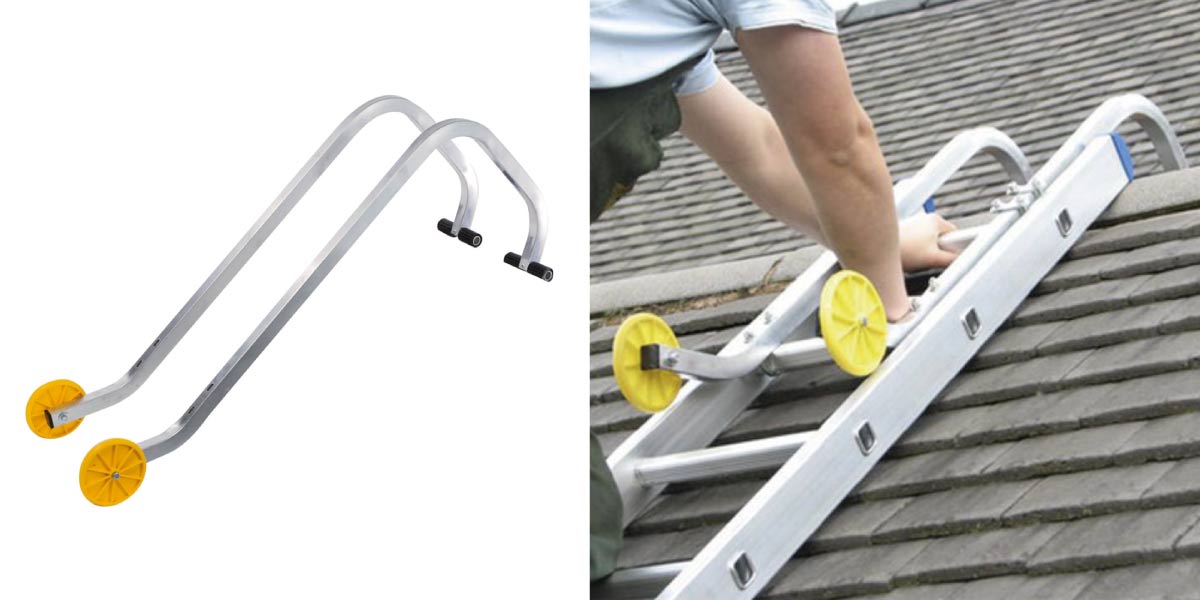
6. Anti-slip Designs
Another great way to make a ladder safer is to purchase a ladder with anti-slip rung / treads.
Ladders can sometimes be a bit slippery, especially if the rungs are made of smooth metal or wood, or if there’s a bit of moisture or dust around. Anti-slip or non-slip ribbing ladders, however, add a textured surface that helps your feet stay put, cutting down the risk of your foot sliding off a rung unexpectedly.
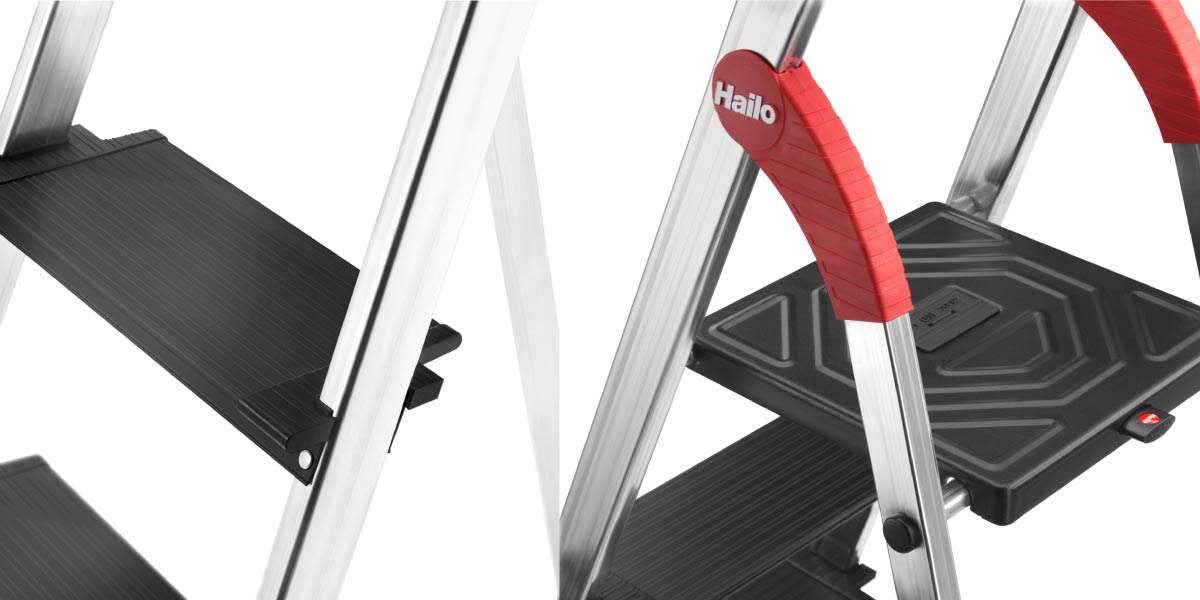
Inadequate footwear or careless climbing techniques can also exacerbate the risk of slipping on rungs and falling from the ladder.
7. Use a Tool Tray or Ladder Bucket Hook
Instead of constantly climbing up and down the ladder to fetch items or balancing things precariously on the ladder’s rungs, a tool tray is a fantastic accessory, designed to sit securely on the top platform of your ladder.
It provides a stable spot to hold your tools, screws, paint cans, or other essentials, so you have everything you need right by your side. This reduces the risk of losing your balance while reaching or stretching for tools, which is the cause of many accidents.
Some ladders, like the Hailo L100 TopLine Aluminium Safety Stepladder and the Werner Aluminium Safety Ladder come with a built-in tray, but if your ladder doesn’t have one of these, a ladder bucket hook is a great alternative, which attach firmly to the ladder’s side, allowing you to hang buckets or tool bags.
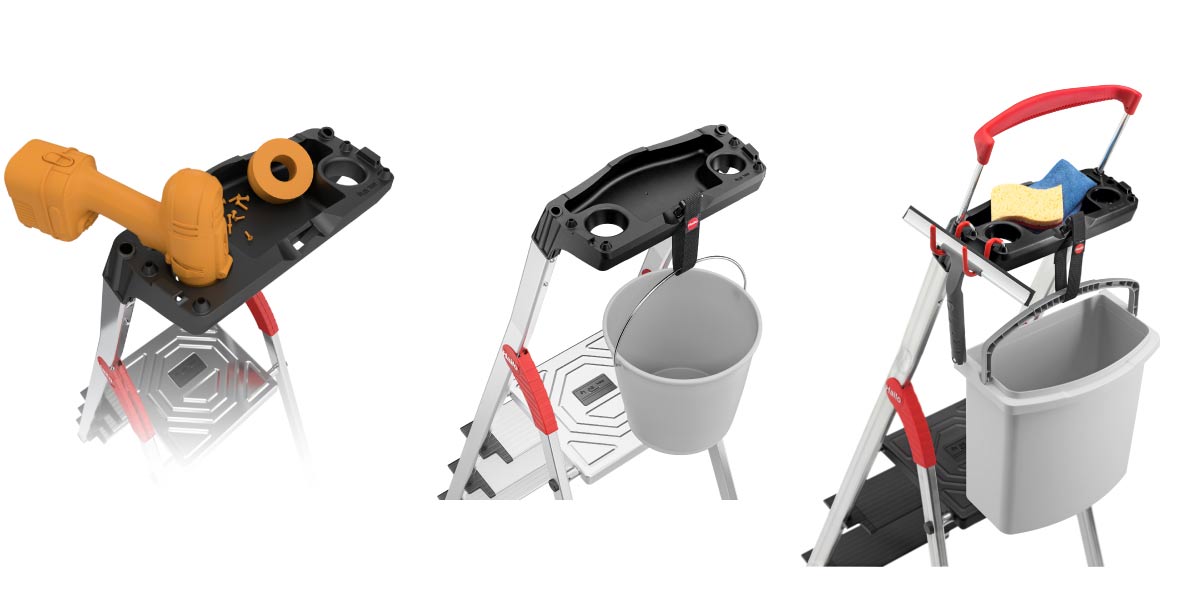
There we have it!
For more ladder tips and insights, check out our blog page, including safety articles such as ‘How to Store Ladders Safely’, ‘How Often Should Ladders be Inspected?’ and ‘How to Use Step Ladders Safely’.
All of our products are manufactured, tested and certified to industry standards. In addition to this, all orders come with free mainland UK shipping and after sales support from our experts.
If you require additional advice or have a question for our team, please don’t hesitate to get in touch with us using our contact form or via phone at +441639849847.
Be the first to know the latest industry news and offers
